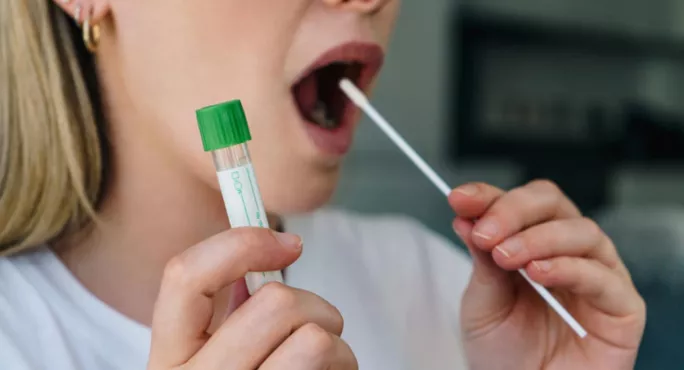Why teenagers and Covid testing don’t mix

As part of the government’s new road map to easing lockdown restrictions, schools are back in action for all students from 8 March. Good news, no doubt, but not without a few hurdles to overcome first.
Not least among these is the issue of Covid testing. The Department for Education’s 67-page document, published this week, dedicates fewer than three pages to explaining how asymptomatic testing is to be carried out in schools.
The headlines are that all returning secondary school students should be offered three tests on site, between three and five days apart, and thereafter are to be tested at home on a weekly basis.
Sounds good. But having seen the testing process in school over the past few weeks for the small number of students currently attending, I’d also suggest it will be nigh on impossible.
Schools reopening: Covid testing is not straightforward
On the face of it, the procedure for testing seems relatively straightforward. Students register with the NHS site, get swabbed and then wait 30 minutes for their result.
When you begin to think about how to do this for hundreds of children at a time, however, it becomes clear there will be problems. What follows are my observations, having watched just 30 staff and students getting tested over the past few weeks.
Registering with my phone on the NHS site took me around five minutes. I found this confusing, and I’m a grown-up with more than one degree.
The students I saw certainly had trouble. Some didn’t have phones. Some had phones but no credit. One student hit a security block on the NHS site that locked him into a perpetual loop that no one could circumvent. Nearly all required help of some kind. This part of the process will definitely require staff to facilitate.
Next, I had to wait in a queue until a testing station was ready for me. Waiting in a queue for an adult is boring but otherwise unproblematic.
Anyone who’s ever watched students queueing for the school canteen or - heaven forbid - for the school bus will be painfully aware that “unproblematic” is not a good description of what happens. This will require more staff to facilitate.
After 10 minutes of queuing, it was time for me to get swabbed. The first time I had to do this, it was both baffling and unpleasant. There is a very strict procedure to follow, where you’re aiming to swab parts of your nose and mouth, the exact locations of which you probably won’t know and which are definitely not places you’d normally want to poke with anything.
Some students will absolutely freak out and refuse. Some will pretend to vomit (teenagers live for the drama). Some will actually vomit. To be fair, I nearly did the first time I had to do it.
One clumsy idiot dropped their fresh swab on the floor and had to start the process all over again. OK, the clumsy idiot was me, and although the woman doing my test didn’t use that precise term, the sigh she gave and the look on her face suggested it was very much what she was thinking.
Managing a monumental task
Given that the actual swabbing is self-administered, there’s also likely to be some issue about students not doing it correctly - and probably a few, what with the aforementioned unpleasantness, who will merely pretend, waving their swab in the general vicinity of their face before placing it into the test tube with an innocent smile. These will be the same students who, when asked for homework, will swear blind they’ve done it, but, after several minutes spent searching their bags, find they’ve mysteriously left it at home.
After swabbing, I was moved to the waiting area. The waiting area must be socially distanced, as at this stage it won’t be clear who will test positive. To do this will require considerable space, as to have a typical year group of 180 students all two metres apart takes up a lot of room.
In the end this was a moot point, as the students I saw immediately moved all the chairs so they could to sit together and chat away merrily with their masks off.
At one point, one of the test team came in to call out test results for students who hadn’t been able to register by phone. She called out the names of six students, only one of whom was still in the room. Where had the other five gone? This part of the process will also need a significant number of staff to facilitate.
I’m sure that most students and staff, keen to return to face-to-face lessons after being stuck at home for so long, will do what they can to make it work. Schools always do.
This week, schools everywhere will be scrambling to work out how to manage this monumental task. Not so long ago, there was talk of calling in the army to help out. This could be the time. Although I’m not sure even the combined Special Forces would be a match for a queue of Year 9s.
Callum Jacobs is a supply teacher in the UK
You need a Tes subscription to read this article
Subscribe now to read this article and get other subscriber-only content:
- Unlimited access to all Tes magazine content
- Exclusive subscriber-only stories
- Award-winning email newsletters
Already a subscriber? Log in
You need a subscription to read this article
Subscribe now to read this article and get other subscriber-only content, including:
- Unlimited access to all Tes magazine content
- Exclusive subscriber-only stories
- Award-winning email newsletters